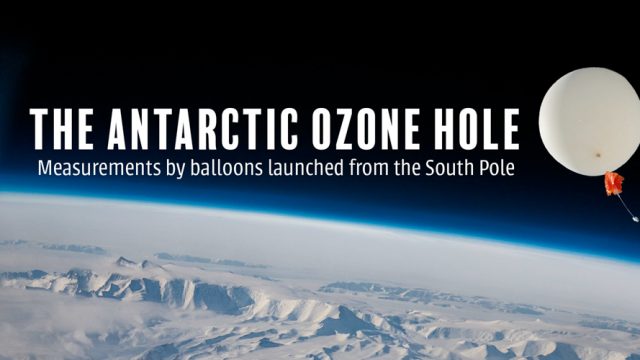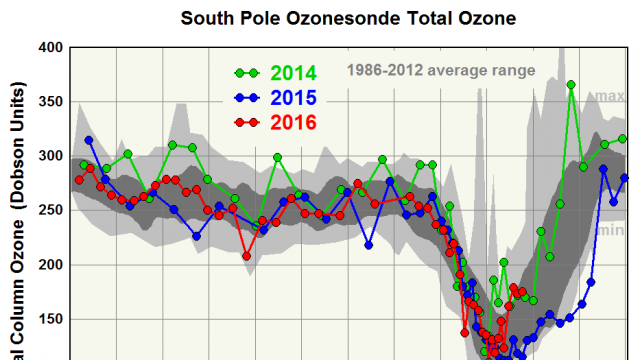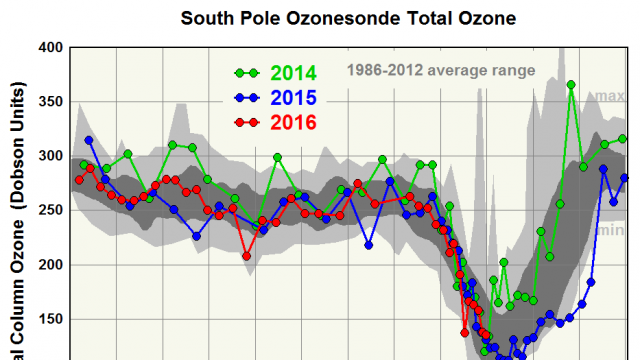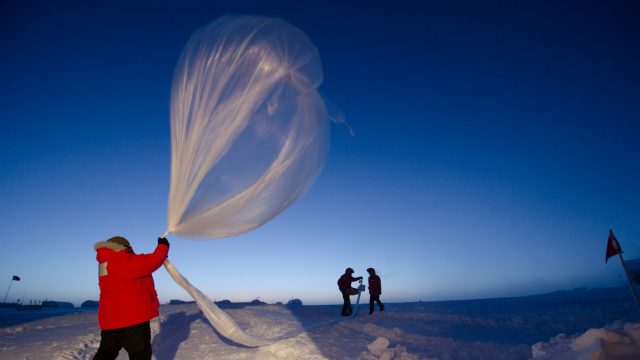The Ozone Layer is the name given to naturally occurring high concentrations of ozone located high up in the stratosphere between 35,000 – 160,000 feet. The ozone layer is important to life on Earth because of its ability to filter out harmful doses of ultraviolet light from the Sun that has the ability to damage… Read More
The 2016 formation of the Antarctic Ozone Hole turned out to be fairly “average.” After 2015, where an incredibly stable polar vortex held the depletion region together well in to December, NOAA scientist were curious how 2016 would progress. Although the vortex remained fairly stable and circular, the depletion region never quite reached the size seen last… Read More
With sunrise finally arriving and the South Pole beginning six straight months of daytime, destruction of protective ozone continues high above in the stratosphere. As can be seen in the plot above, 2016 continues marching toward a minimum measurement of total column ozone during the annual formation of the Antarctic Ozone Hole. Scientists at Boulder’s… Read More
With sunrise now only a few days away, NOAA scientists at the South Pole continue to launch balloons high in to the stratosphere to measure the quickly depleting ozone layer overhead. Free chlorine activated by the long-absent sunlight high in the stratosphere is currently destroying large swaths of protective ozone. The instrument on this balloon… Read More
By Patrick Culls, CIRES and NOAA scientist, from Boulder, September 15 From 2008-2009, I spent a year living at the bottom of the world. I worked for the National Oceanic and Atmospheric Administration (NOAA) at the Amundsen-Scott South Pole Station, which sits only a hundred yards from the geographic pole marker. The short summer season was… Read More





